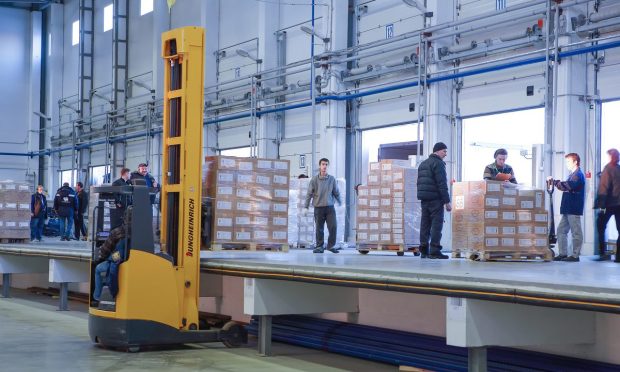Wanted: Supply Chain and Logistics Savants to Help Close Deals

Businesses increasingly see delivery preferences, speed of delivery, cost of delivery and inbound supply chain as competitive advantages.
As a result, the role of logistics and the supply chain is fundamentally different from what it was five years ago.
“It used to be looked at as a cost function; it has now changed to a revenue function,” Kushal Nahata, CEO and co-founder at FarEye. “That has dramatically changed everything around that.”
Nahata has seen this change among customers using FarEye, an intelligent delivery platform used by retail, eCommerce and third-party logistics companies.
On June 21, FarEye announced it had partnered with Spryker to integrate Spryker’s digital commerce operating system and FarEye’s platform. The companies said the move would enable users to give their customers — the end consumer — a good experience from shopping through delivery.
Read more: Spryker Partners With FarEye on Last-Mile Delivery of B2B eCommerce
Becoming a Core Business Role
When logistics and supply chain were considered a cost function, companies were all about reducing costs, Nahata said. Now that they’re considered a revenue function, more businesses are seeing the chief supply chain officer as a core business role rather than a supporting role.
This change in mindset was driven by the growth of eCommerce and then accelerated by the pandemic, when businesses saw that if their supply chain broke, they could go out of business.
“From a consumer perspective, that’s the experience we are looking at,” Nahata said. “The way I say it is, ‘Look, in very simple words, it’s not about what you deliver, it’s actually about how you deliver.’”
Meeting Consumers’ Expectations
One key part of meeting customers’ expectations around delivery is predictability, Nahata said. Consumers want to know beforehand when it will arrive. They don’t want to be told that it will arrive in “seven to 15 days” or “three to 10 days” — they want to know the day on which it will arrive.
Another key element is options. A customer might need some items faster than others, so a business can earn additional revenue and customer retention by offering faster deliveries at some cost.
A third important part of the “how” of delivery is sustainability. Many companies have a goal to be carbon net neutral by 2030, 2035 or 2040. A business cannot be operating in an optimized manner if it’s delivering to a location 10 times a week. If it can deliver next day instead of same day, for example, it can better aggregate deliveries.
These three expectations, which are growing in importance, run counter to the speed of delivery.
“I see a trend of a same-day [delivery] as a smaller percentage compared to a next-day delivery,” Nahata said.
Working Toward Autonomous Decision-Making
Another trend is store brands delivering from stores. When the customer is willing to pay a premium for the delivery cost, the store brands can deliver from their stores to nearby customers, and they can do it in a few hours.
“This concept is the first time they are able to realistically compete with Amazon,” Nahata said.
Looking ahead, Nahata said he believes deliveries will eventually be automated.
There are many decisions to be made on the journey from order to delivery, and many of these decisions are made manually, he said. These include where it needs to be delivered, when it needs to be delivered, which carrier needs to deliver it, which driver needs to deliver it, which sequence it needs to be delivered in, what time the customer is available and other questions.
“There are pieces of it which we have made autonomous, but as a journey it’s still not autonomous,” Nahata said. “That’s the forward view which I see, the world which could be extremely efficient and predictable.”
For all PYMNTS B2B coverage, subscribe to the daily B2B Newsletter.
